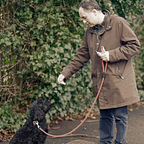Dog Shows: 101
There is so much that goes into a dog show, both on and off the competition floor. One has to be familiar with the different categories of dog breeds, how competition works and how a dog is judged based on the standards set up for that dog breed. For some, it can seem like a completely different world, and it can seem impossible to truly be prepared for a dog show. However, knowing and understanding the basics of what goes into a dog show will help open up many doors for dogs and dog handlers to be successful.
There are seven different competition groups, and they all have different standards describing the ideal dog for that group. The sporting group are hunting dogs known for their high energy and stable temperament. They should be able to point and mark game, flush out game, or recover game from land or water. Hounds are another group, and their responsibility is to bring down the game or simply hold it at bay until the hunter arrives. The working group is where you can find dogs that can serve as police, military, and service dogs. Terriers are smaller and more agile, making it easier for them to pursue their preferred prey, vermin. The toy group are mainly bred to act as companions. The herding group have dogs that are bred to serve ranchers and farmers when moving livestock from one area to another. Finally, there is the non-sporting group. This group is essentially where all the outlier dogs go. They don’t particularly fit any other group, but they are just as important.
Once a dog has been placed into a group, it’s time for the dog show. An exhibitor/handler is presented to the judges. The judges are looking to evaluate the breeding stock of each dog in each group, based on the standards of what an ideal dog should be. During the dog show, a dog is competing for points toward that American Kennel Club Championship title. In order to win, a dog needs to receive a total of 15 points awarded by at least three different judges. A dog needs to win the “Best of Breed” award r to advance to compete for the best in show.
There is a great deal of preparation that goes into a dog show, both on and off the competition floor. However, once the basics have been met, it is smooth sailing from there. Making sure one is familiar with the different dog breeds, and how judging works will ensure a positive and productive competition.
Originally published on Michael Wolkind QC’s website.
